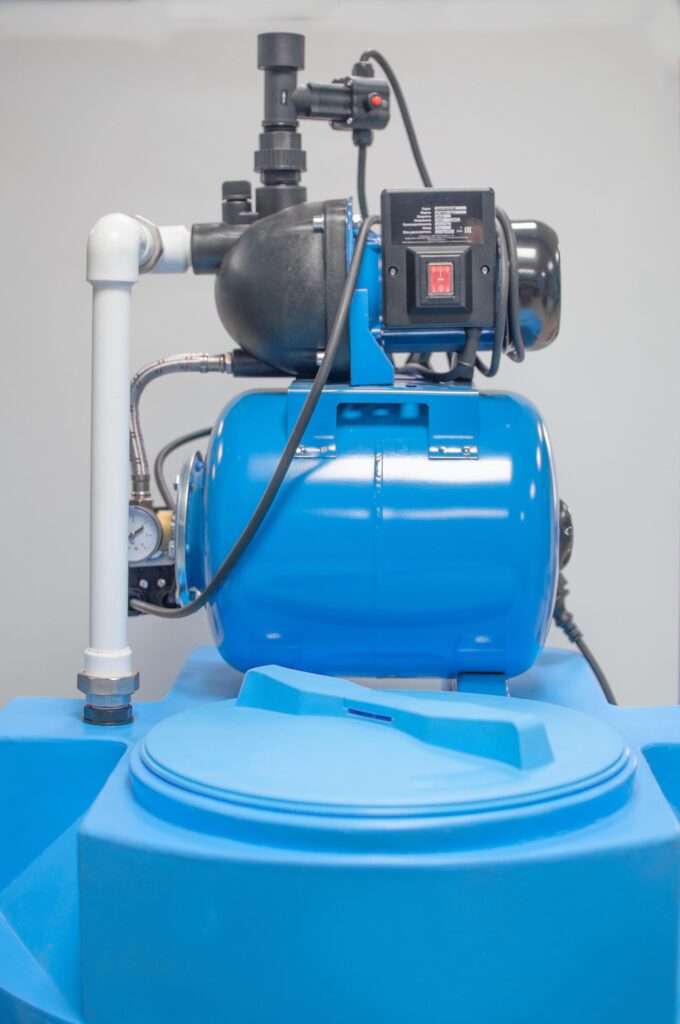Are All Well Tanks the Same?
Are All Well Tanks the Same?
Not all well tanks are created equal—and choosing the wrong one can mean poor water pressure, frequent pump cycling, and early pump failure. With newer tank technologies and smarter systems now available, it’s more important than ever to understand your options.
In this updated guide, we break down the three main types of well pressure tanks in New Jersey—Air-Over-Water, Diaphragm, and Bladder—so you can make the best choice for your home. We’ll also show you the common signs of a failing pressure tank, and when it’s time to consider a repair or full tank replacement.
Mark Lindsay and Son Plumbing & Heating has been proudly serving New Jersey homeowners for over 60 years with expert well pump repair and well pump replacement services. If you’re looking for reliable water pressure and long-term system health, you’re in the right place.
What is a Well Pressure Tank?

The simple answer is a tank that maintains the pressure in a well water system. In a home water well system, a pump, either a submersible or a jet well pump, pumps the water from the ground into the home.
A well pressure tank not only maintains the water pressure in the home, it acts as a reservoir to store the water needed for the home and to signal the pump when the water level gets low and needs to be refilled.
The difference is in how the tanks maintain the water pressure in the system.
Types of Well Pressure Tanks
As stated before, there are three types of tanks: Air-Over-Water, Diaphragm, and Bladder. They each do the job, but in a different way.
1) Air-Over-Water Tank
These tanks use a single tank to hold the water and air charge. They usually have an internal coating to prevent corrosion. The terms “glass lined” or “epoxy coated” refers to the material used to line the tank and prevent corrosion.
The air and water are in a single tank with no separation. They’re not as popular as they were but are still used. The pressurized air pushes down on the water to create the pressure needed to supply your home. While they tend to be larger than other types of tanks, their capacity is similar to smaller tanks. This could cause the pump to cycle on and off more frequently and lead to premature pump wear and failure. They can be prone to getting water-logged due to the air loss trough pinhole becoming corroded.
2) Diaphragm Pressure Tanks
Diaphragm pressure tanks have two chambers: one for air, and one for water. They’re separated by a rubber diaphragm that’s permanently bonded to the inside of the tank, which rises and falls with the water level.
As water is pumped into the lower section, the diaphragm pushes up into the air chamber which triggers a switch that shuts off the pump.
While this is an efficient system, it does have its drawbacks. One is having the diaphragm come loose from the inside of the tank and letting water flow into the upper chamber. If this happens, you’ll need to replace the tank. The other problem is having the diaphragm fold over itself and causing a false reading which can lead to premature pump burn-out and the tank being ruined.
3) Bladder Pressure Tanks
The third kind of well pressure tank is the Bladder Pressure Tank. These use two separate chambers for air and water. The bladder is basically a large balloon filled with air that expands and contracts, triggering the pump. Since they’re self-contained, they don’t have the issues of a diaphragm or a single chamber tank. Another advantage is that since the water and air are kept separate, air is not absorbed into the water and therefore, there’s no need to have air added. Air bladders also tend to last longer than diaphragms.
They can have problems with water pressure or with short water pump cycles, which are usually because of a problem with the pump controls, with well or pipe leaks, and somewhat less often, a failure of the internal bladder, which may be replaceable. Another problem is having the bladder “get stuck to itself” and remain uninflated. This can cause rapid pump cycling.
Best Well Pressure Tank for Home Use: A Well Tank Comparison
Wondering about the best well pressure tank for home use? While bladder tanks tend to be the most efficient and durable for residential systems, the right choice often depends on your household size, water usage, and pump setup.

Frequently Asked Questions About Well Pressure Tanks
Our West Milford Well Tank Experts Are Here to Help!
If you’re having water pressure issues or frequent pump cycling, you probably have a problem with your pressure tank. Other than checking to see if it’s full, by gently rocking the tank, any other problems should be left to a professional. The West Milford plumbers at Mark Lindsay and Son Plumbing & Heating can take care of all your well pump and tank needs. If you’re having well tank problems, call us to schedule your well tank replacement!
